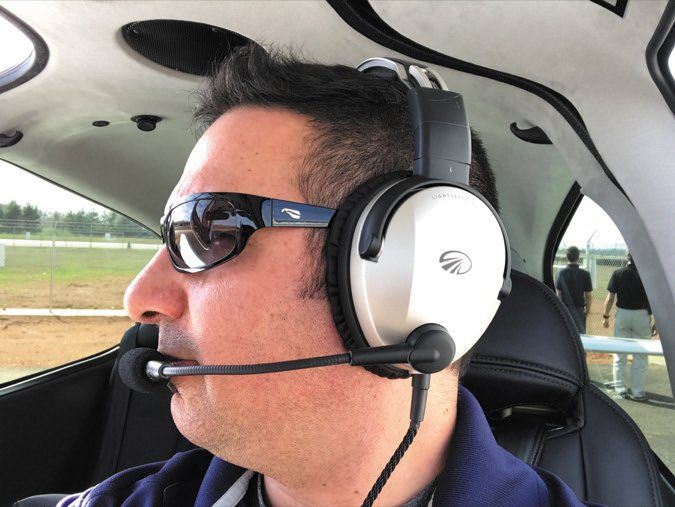You don’t have to look far into any aviation retailer’s catalogue to find sunglasses that cater to pilots. Yes, we know there are plenty of cheaper brands you can find at Sunglass Hut and other non-aviation retailers, and we also know that selecting glasses is as personal as selecting clothing. A cheap pair of drugstore shades may suit you just fine.
Still, since we last did an aviator sunglasses roundup nearly eight years ago, there are some new brands and styles worth looking at to see how they compare to more mainstream models from Oakley and Ray-Ban, for example.We kept this review contained to eight favorites, based on build quality, versatility and comfort. Inevitably, there will be glasses that work for you that we didn’t cover, so tell us about them and we’ll include your comments in a long-term follow-up report on how our top picks held up.
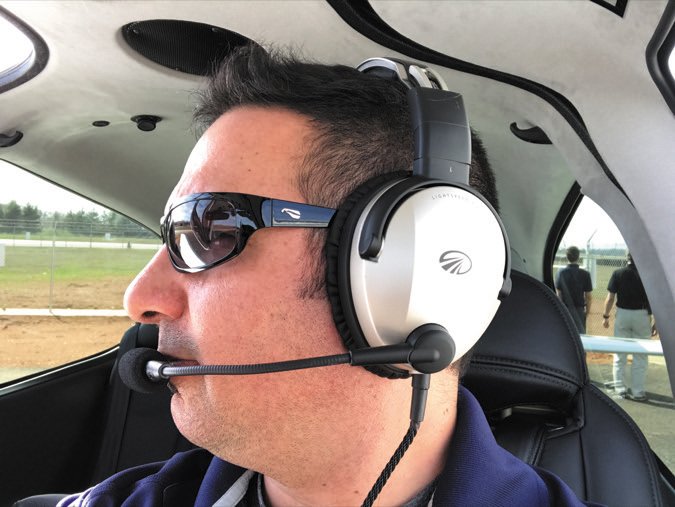
Eyewear Tech 101
It’s worth discussing some of the things to consider when investing in high-end glasses. Styling aside, obviously the quality of the lenses should be front and center. Typically, sunglasses lenses are made from CR-39, mineral glass, polycarbonate or Trivex. Optics professionals we spoke with prefer polycarbonate and Trivex lenses because of their impact-resistant qualities—something that’s an obvious consideration for flying. While CR-39 and mineral glass lenses offer impressive lens clarity, they can shatter.
Dean Siracusa at Summer Hawk Optics in Austin, Texas, reiterated that all eyewear sold in the U.S. (they’re considered medical devices) is regulated by the FDA. They must contain basic UV protection, which has nothing to do with the tint of the lens. While mineral glass and CR-39 need coatings to block UV light, polycarbonate and Trivex materials naturally block UV light. Additionally, modern coatings can now block 100 percent of all UV light. The “UV400” spec means the lenses will block at least 99 percent of UV light.
We’ve all heard that polarization is no match for the cockpit because these lenses interfere with some LCD displays. But there’s a common misconception that polarization blocks UV light. It does not. Instead, polarized lenses filter out a specific angle of visible light—useful for cutting glare on the water, as one example—but of no use for UV protection.
And what about photochromic lenses, which darken automatically in sunlight? They’re not great in the cockpit because most photochromic lenses use UV light to darken the lens tint. The Transitions brand XTRActive photochromic lenses have two different materials that darken, based on either visible or UV light. If no UV light is present, they’ll still darken a great deal with just visible light being present. Additionally, these lenses will go almost completely clear, which makes them excellent for use at night too. This brand of photochromics is normally only available in prescription lenses. We can attest to their success—we invested in a pair of Flying Eyes prescription sunglasses with XTRActive lenses and wear them in total darkness and in bright sun. They perform flawlessly.
Last, the frame/lens style you like might not work if you plan to convert them for your prescription. It’s no surprise that athletic/sport wrap glasses offer excellent side protection, but few manufacturers can create quality prescription lenses for high base curve frames. We’re told the ones that do can only handle spheres up to +/- 3.50.
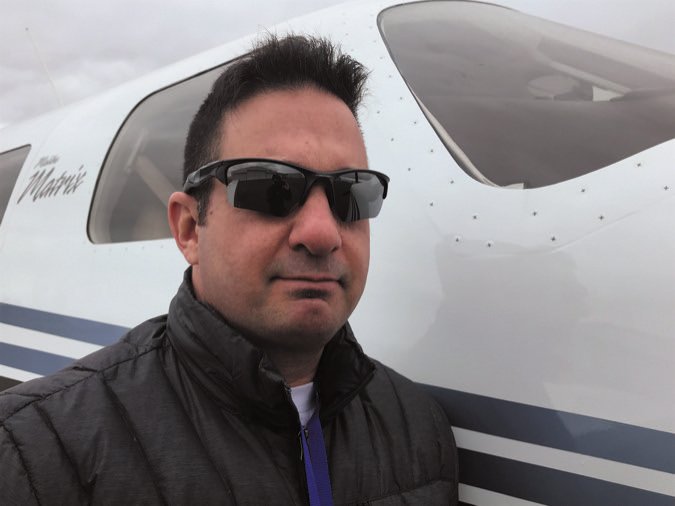
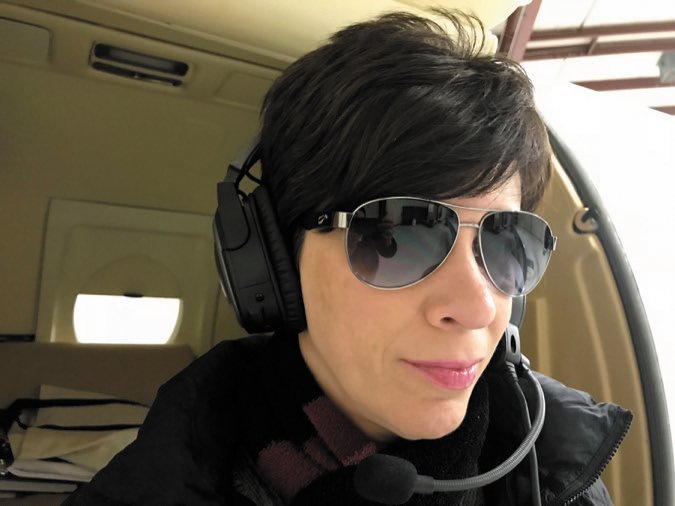
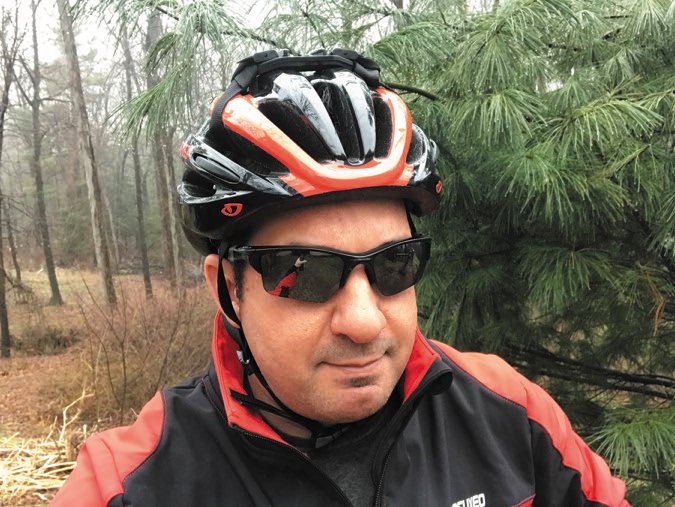
Flying Eyes
Priced from $169 to $194, the original Flying Eyes sunglasses are the Hawk convertible model, which have interchangeable temples (including a nylon strap) that make the glasses headset and helmet friendly. They’re also available in non-RX bifocals. In addition to the Hawk, the company recently added a variety of frame styles and all of them have UV400, impact-resistant polycarbonate, prescription-compatible lenses.
We’re impressed not only with the Flying Eyes quality, durability and warranty (our prescription Hawks flew off while motorcycling, were crushed in traffic and the company replaced them for the cost of shipping), but also for its guidance. It recently launched a public service website (www.eyesthatfly.com) to help buyers find opticians and ophthalmologists who are fellow pilots. These professionals should better understand the unique requirements for cockpit-friendly bifocals, for example.
The Cooper Titanium model is a classic aviator style and is priced at $269. It has titanium frames and 1-mm thin Resilamide temples—which are lightweight and virtually unbreakable. The frame size is 135 mm wide. For smaller faces, the company offers the $269 130-mm-wide Kestrel Titanium aviator model. They were a favorite for the female aviators during our evaluation.
We’ve had the Flying Eyes Golden Eagle Sport model in our long-term test pool for a year and they’ve performed well. We like their durability, clarity and comfort. Like the Oakley Flak (more on them in a minute), the Golden Eagles work we’ll for sports and for everyday use. We like them so much we’re converting them for prescription lenses. See the entire Flying Eyes line at www.flyingeyesoptics.com.
Scheyden Mustang
California-based West Coast Trends sells the Scheyden Precision Eyewear brand and says its sunglasses (which are made in Fukui, Japan) are engineered to aerospace-like tolerances. We sampled the company’s most popular aviation-specific model, the $309 Fixed Gear Mustang.
The Mustang has a titanium frame and the lenses come in bronze or grey and are available for prescriptions, including bifocals. The Mustang has CR-39 lenses that are available in six-layer non-polarized or eight-layer polarized coating options. We like that the Mustang has spring-loaded slim temples that make the glasses easy to slide on and off while wearing a headset. We also made note of the adjustable silicon nose pads, which added to the model’s comfort—no pressure points on the nose. The frames are adjustable (we couldn’t snap them) and have an acetate coating on the temple to help block side glare.
Visit www.scheyden.com.
Method Seven Altitude
This company in Santa Cruz, California (www.methodseven.com), established the first HID specific optics for horticulturists who work in growing rooms and now have the M7 Sky series for aviators. The company is easy to talk with and quickly sent us a sample of the Altitude wrap model.
The $240 Altitude has oxygen mask/headset-friendly titanium frames and temples, and the crystalline lenses are available in three VLT (visible light transmission) options. VLT specs indicate the percentage of visible light that passes through the lens. The SKY 9 has a VLT of 9 percent—one of the darkest lenses on the market, according to the company. The SKY 18 is Method Seven’s all-purpose lens (the sample we tried) and we found that it performed we’ll at dusk and for brightening the horizon when looking ahead at a broken to overcast cloud layer. In fact, the blue tint on the lens almost tricked us into thinking we were eyeballing blue-sky VFR. That might not always be good, in our view.
The SKY 30 is marketed for some older pilots with eyes that might require more light (and those who leave their sunglasses on all day) since it lets in the most light of any SKY lens.
Method Seven’s SKY lens technology is a new creation blending the rare-earth element neodymium, which absorbs a range of yellow light that’s intended to provide a greater contrast over a wide range of light levels. It gives the lens the blue appearance.
The company also sells the RX compatible $240 Ascent Aviator model, made with hand-tooled and serial-numbered Japanese titanium.
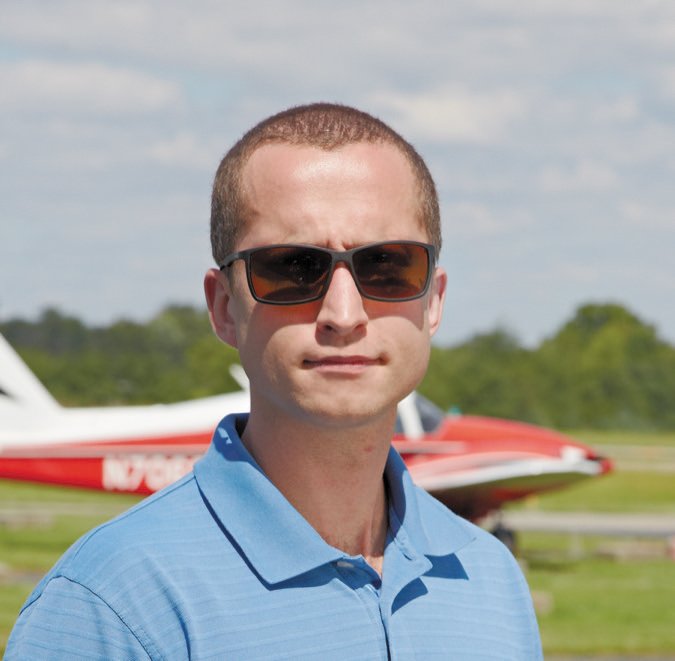
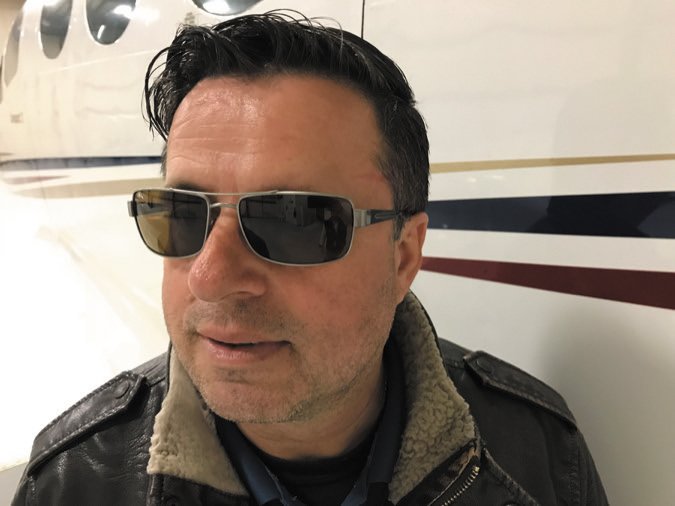
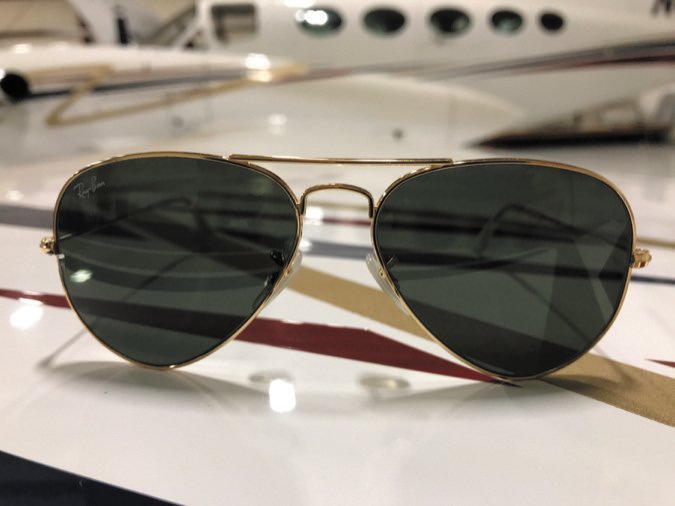
Cloudbase Optics, AV-Sun Readers
Cloudbase Optics has a line of contrast-enhancing glasses that the company says are optimized for glider pilots who depend on seeing nascent thermal cloud formation in a bright, intense lighting environment. Constructed in Italy (the company is in Seattle, Washington), the Cloudbase frames and lenses from vision specialist Carl Ziess are made from lightweight and flexible TR90, which is headset friendly.
In addition to the $109 LeWave, the company sells the $109 ColdFront square Aviator, the $99 WarmFront Aviator and the large and small $109 DustDevil model. All models have a lifetime warranty. See them at www.cloudbase-optics.com.
Kent, Washington-based Airplane Things Inc. has been selling glasses for 17 years and we tried the bifocal AV-SUN readers. The CR-39 lenses have a grey tint and are available in titanium frames, a choice of various bifocal strengths and with prescription lenses. Visit www.airplanethings.com.
Ray-Ban, Oakley, Serengeti
We remain impressed with the build quality of the $153 RB3025 Ray-Ban Aviator Classic. Designed for U.S. aviators in 1937, our sample has the gold frame and green G-15 glass lenses that absorb 85 percent of visible light. They did we’ll in bright sun and overcasts.
But, they certainly aren’t the lightest and they don’t work for sports, although they do work for outdoor shooting. For a head-spinning collection of glasses, visit www.ray-ban.com.
Like the Ray-Ban Aviator, the Serengeti 5222 photochromic aviator model is heavy and can be fatiguing, plus it slides down a sweaty nose. But it performed we’ll in a variety of light conditions—always darkening enough to do the job. Better yet, we spotted the 5222s for under $100 at several mail order houses. That’s a substantial decrease from their original $180 price. See www.serengeti-eyewear.com.
We saved our favorite—the $163 Oakley Flak Jacket—for last. While they aren’t official pilot’s glasses, we like that the Flaks serve equally we’ll in the cockpit as they do for outdoor sports and for everyday wear. The full-wrap, iridium grey HD Optics (HDO) shatterproof lenses are near flawless performers in all lighting conditions, except for total darkness. They fit we’ll with a headset and could be among the most comfortable sunglasses we’ve tried. Visit www.oakley.com.
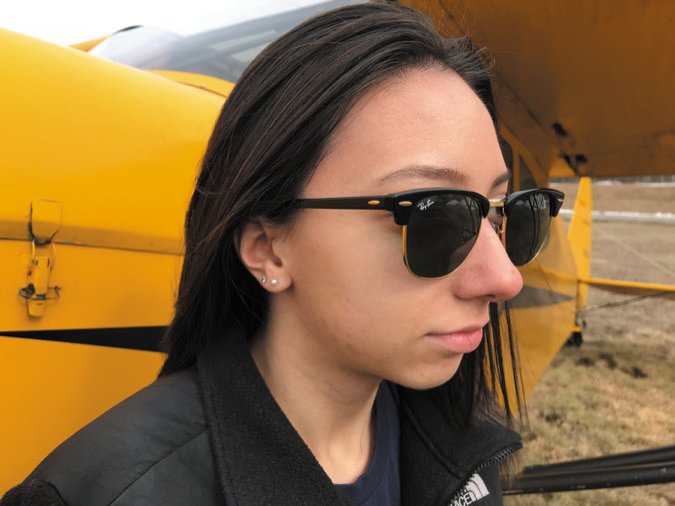
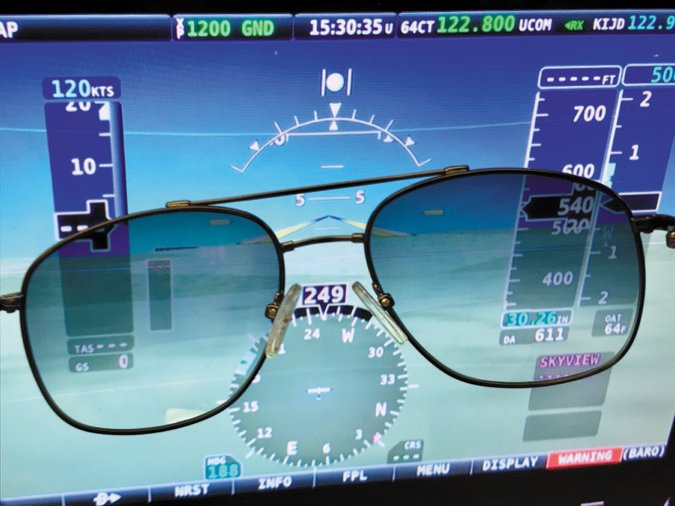
Take Them Flying
That’s what you’ll have to do to find the glasses that work best for you. Use this review as a starting point. The ones we selected are standout favorites, and some weren’t available when we covered sunglasses in the December 2010Aviation Consumer.Use that as a supplement to this latest one.
Worth mentioning is Randolph Engineering in Massachusetts, a government supplier with pilot glasses that performed we’ll in previous trials. We reached out to the company no fewer than three times for a sample and to catch up on its technology, but the marketing/communications department never got back with us. With that lack of communication, we can’t recommend them.
We can recommend all the glasses that made this report and we’ll follow up in a year with a long-term report.
Shades That Work For Females
Like the aviator watch market, it’s too bad that few aviation sunglasses manufacturers cater to female aviators. In general, most models are more appropriate for males, who often have larger faces. For our review, we lobbied the help of several female aviators in a variety of age groups. Their demands aren’t unreasonable. Practicality is important.
“Since I’m not in a cockpit full-time and don’t have a budget for multiple pairs of shades, my flying glasses need to look good on the street and play we’ll with other activities including hiking, boating and driving. They must also be designed for comfort under a headset,” said our own Jennifer Whitley, who wears Serengeti.
“Everyday wear and durability are the most important considerations for me because I want to transition to and from the cockpit without swapping glasses,” another pro pilot told us. She invested in the Oakley women’s aviator model and couldn’t be happier.
Every female aviator who sampled the smaller-framed Flying Eyes Kestrel aviator model liked the fit, styling and performance. “I wouldn’t have any reservations wearing these out in a social setting when I’m sporting my sundress and open-toe pumps,” said one pilot of the Kestrels.
Another favorite, although not an aviator style, is the $153 Ray Ban Clubmaster shown on Ashley in the photo to the left. They proved to be durable, comfortable, stylish, versatile and most important, have lenses that work we’ll in the cockpit. What else can a girl ask for?

